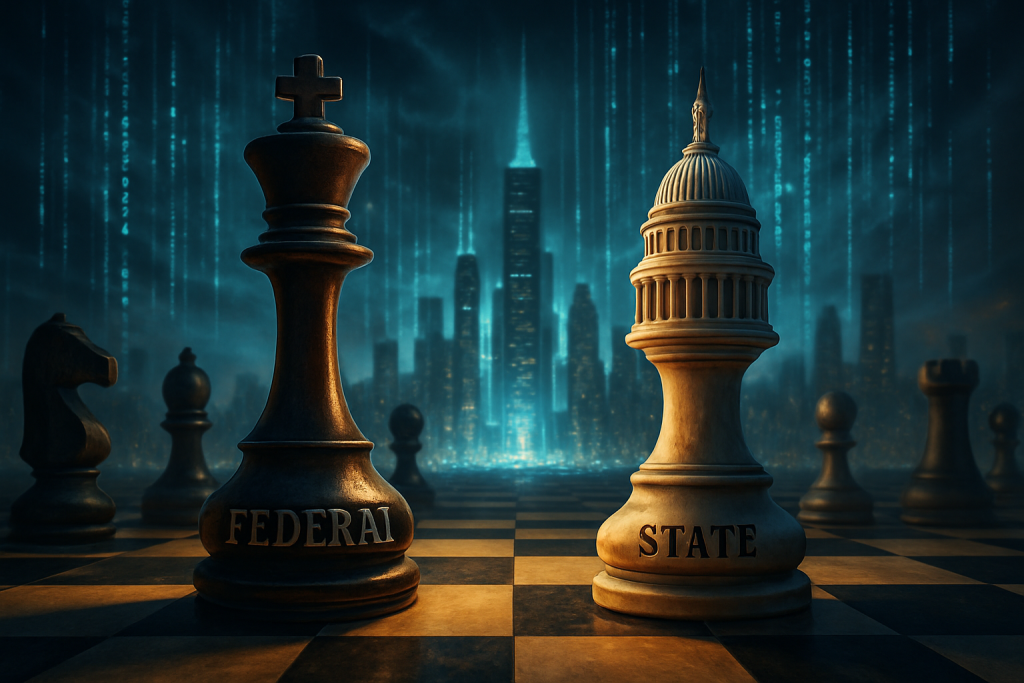In a move that’s less “I’ll be back” and more “We’ll be back… maybe,” the White House has pressed pause on a draft executive order designed to preempt state laws regarding artificial intelligence. Think of it as the regulatory equivalent of a dramatic cliffhanger in your favorite streaming series, only instead of wondering if your beloved protagonist will survive, you’re left pondering the future of AI oversight in America.
The news, which broke late yesterday, signals a significant shift, or at least a temporary stall, in the ongoing tug-of-war between federal and state governments over who gets to call the shots when it comes to the rapidly evolving world of AI. The proposed order, had it gone through, would have essentially given the U.S. Attorney General the power to challenge state AI regulations through lawsuits, and even threatened to withhold broadband funding from states deemed to have overstepped the mark with their AI laws. Imagine a world where your state’s attempt to protect you from deepfake scams could cost them vital internet infrastructure. That’s the kind of high-stakes game we’re talking about.
So, what led to this dramatic pause? To understand that, we need to rewind a bit. The genesis of this battle lies in the increasingly complex landscape of AI development and deployment. On one side, you have tech giants like Google and OpenAI, arguing that a patchwork of state laws will stifle innovation, creating a regulatory minefield that makes it difficult to operate and compete effectively. They envision a future where AI-powered solutions can revolutionize everything from healthcare to transportation, but only if they’re not bogged down by a confusing web of conflicting regulations.
On the other side, you have states, lawmakers, and advocacy groups concerned about the potential risks of unchecked AI. Think of the proliferation of deepfakes, the potential for algorithmic bias in hiring and lending, and the general unease that comes with increasingly sophisticated AI systems making decisions that impact our lives. For these groups, state-level regulations are seen as a crucial safeguard, a way to protect citizens from the potential harms of AI while the federal government figures out its own approach. It’s a classic case of “if you want something done right, do it yourself,” only with potentially massive economic and societal consequences.
The draft executive order, as it turned out, was not exactly a crowd-pleaser. It faced bipartisan opposition, with critics arguing that it would undermine states’ ability to protect their residents from AI-related risks. Earlier in the year, a similar federal effort to limit state AI laws tied to broadband fund access was overwhelmingly rejected by lawmakers, a resounding 99-1 vote. That’s the kind of consensus you usually only see on resolutions condemning puppy kicking or supporting apple pie. The near-unanimous opposition highlights the deep-seated concerns about federal overreach in this area.
And then there was the Trump card, so to speak. Former President Trump reportedly backed incorporating a similar provision into the National Defense Authorization Act, adding another layer of political complexity to the already fraught debate. Opponents warned that this would erode federalism and favor Big Tech at the expense of local protections. It’s a scenario that conjures up images of David versus Goliath, only with David armed with a regulatory slingshot and Goliath backed by Silicon Valley’s deepest pockets.
The implications of this paused executive order are far-reaching. For one, it underscores the ongoing struggle to define the appropriate balance between federal authority and state autonomy in regulating rapidly evolving technologies. It’s a debate that’s been raging for decades, from the early days of the internet to the rise of social media, and now AI is the latest battleground. It also highlights the challenges in creating a cohesive regulatory framework that fosters innovation while safeguarding public interests. It is a tightrope walk, indeed.
The financial and economic impact is also significant. Tech companies, particularly those heavily invested in AI, are understandably keen to avoid a fragmented regulatory landscape that could hinder their growth and competitiveness. A patchwork of state laws could increase compliance costs, slow down product development, and make it more difficult to attract investment. On the other hand, strong state-level regulations could foster greater public trust in AI, leading to wider adoption and ultimately benefiting the entire industry. It’s a delicate balancing act, and the stakes are incredibly high.
But beyond the immediate political and economic considerations, this pause raises deeper philosophical and ethical questions about AI’s role in society. How do we ensure that AI is developed and deployed in a way that is fair, equitable, and aligned with human values? Who gets to decide what those values are? And how do we prevent AI from exacerbating existing inequalities or creating new ones? These are not easy questions, and there are no easy answers. But they are questions that we must grapple with if we want to create a future where AI benefits all of humanity, not just a select few.
So, what’s next? Will the White House resurrect the executive order in a modified form? Will Congress step in and pass comprehensive AI legislation? Or will the states continue to forge their own paths, creating a patchwork of regulations that ultimately shapes the future of AI in America? Only time will tell. But one thing is certain: the debate over AI regulation is far from over. And like a good sci-fi thriller, expect plenty of twists and turns along the way.
Discover more from Just Buzz
Subscribe to get the latest posts sent to your email.

